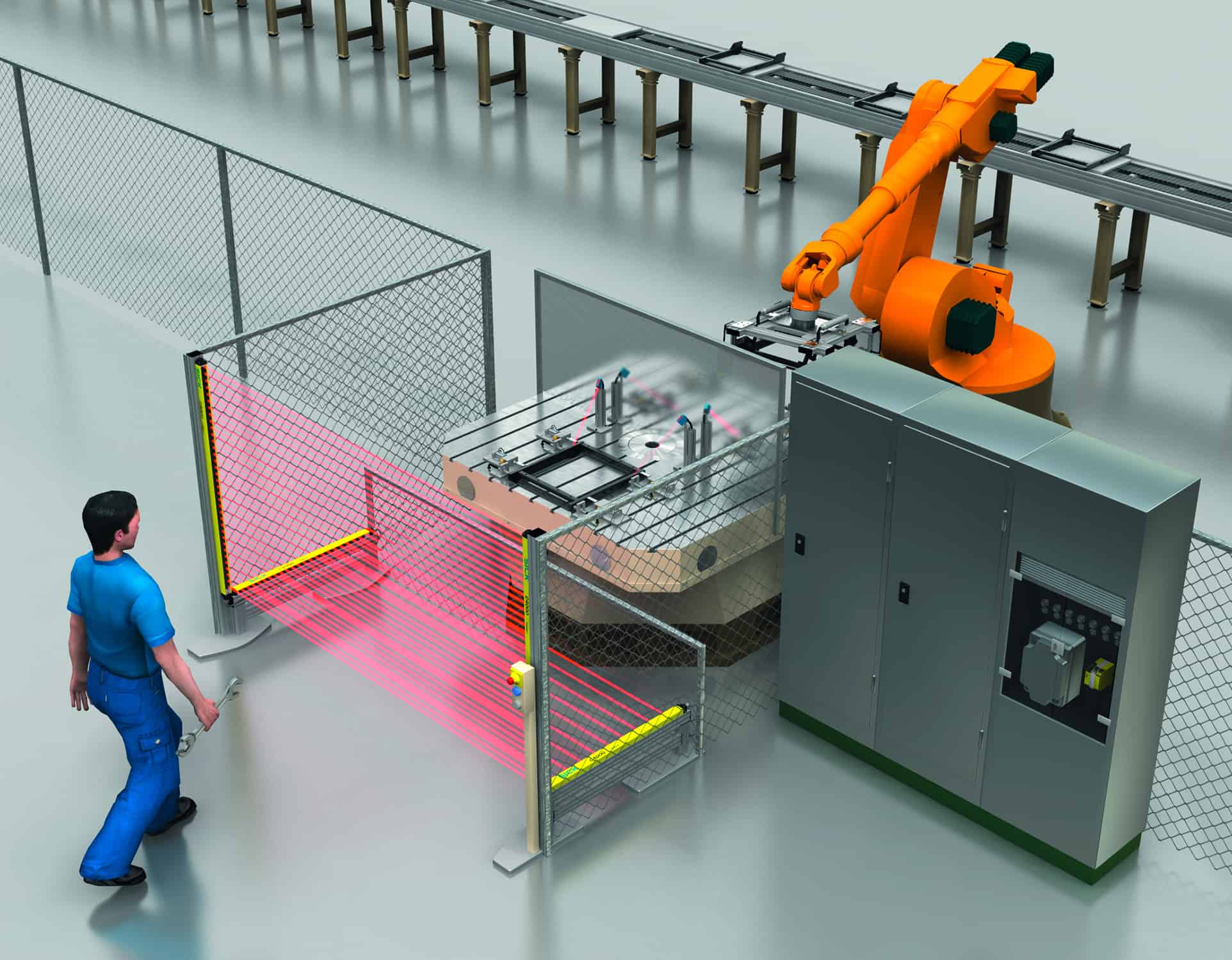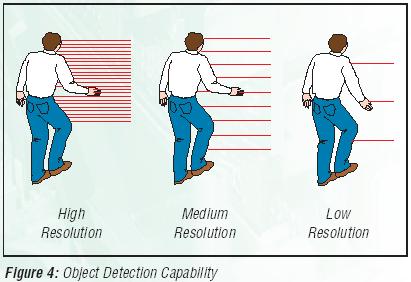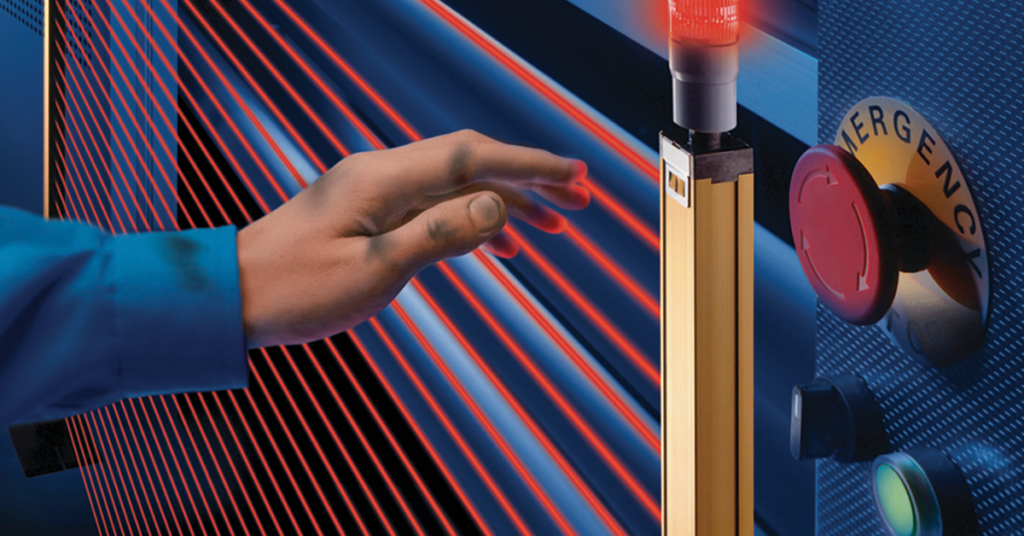
25
Benefits of Using Safety Light Curtains
What are Safety Light Curtains
Definition and Functionality
Safety light curtains are advanced presence-sensing devices used to protect personnel from hazardous areas in industrial environments. They operate by emitting infrared light beams across a defined sensing field. When any object—such as a hand or finger—interrupts the beam, the system triggers an immediate stop command to the connected machinery, preventing accidents.
These curtains are widely used as an alternative to physical barriers, offering seamless access to machine areas while maintaining high levels of safety. Their non-contact sensing nature allows for increased productivity without compromising worker protection, making them a cornerstone in modern machine safeguarding solutions.
Types and Resolutions
Safety light curtains come in various types, each tailored to different levels of protection and application needs. The key distinction lies in their resolution—the distance between adjacent beams:
High-resolution models (e.g., 14 mm) are designed for finger detection, ideal for protecting operators near small openings or fine tooling.
Medium-resolution curtains (e.g., 30 mm) are used for hand detection, typically found around presses, pick-and-place systems, or robotic workstations.
Low-resolution variants (e.g., 50 mm+) are suited for full-body protection, often installed around access gates or large hazardous zones.
Choosing the right type and resolution is crucial for meeting safety standards while ensuring minimal disruption to workflow. Most models support features like muting, blanking, and cascading, offering further flexibility in complex setups.
Advantages of Safety Light Curtains
Enhanced Workplace Safety
Safety light curtains significantly reduce the risk of injury by creating an invisible barrier around dangerous machinery. If an operator’s body part enters the detection zone, the machine halts immediately—preventing potential accidents. This proactive approach to machine safety not only protects workers but also reinforces a culture of safety throughout the facility. Their non-contact design ensures consistent monitoring without physical wear, making them a reliable safety solution for high-risk environments.
Improved Production Processes
Unlike traditional mechanical guards & interlocking switches, safety light curtains allow unobstructed access to equipment while maintaining safety. This streamlined access reduces downtime for loading, unloading, or maintenance tasks, thereby improving overall workflow efficiency. For automated lines or robotic cells, the integration of light curtains enables quick and safe interaction between humans and machines without slowing down production. As a result, manufacturers benefit from both protection and performance.
Compliance with Safety Standards
Modern light curtains are designed to comply with international safety standards such as ISO 13855, IEC 61496, and OSHA requirements. By implementing them, businesses can meet mandatory safety regulations and reduce liability risks. Many models also include diagnostic features and status indicators, helping companies document compliance more easily during audits or inspections. Their inclusion demonstrates a commitment to both employee well-being and regulatory responsibility.
Cost Effectiveness
While the initial investment in safety light curtains may seem significant, their long-term cost benefits are substantial. By minimizing workplace injuries and machine downtime, companies save on medical costs, legal liabilities, and lost productivity. Additionally, because these systems are easy to install and reconfigure, they offer excellent flexibility for evolving production needs—eliminating the need for custom mechanical guarding in many cases. The return on investment becomes evident as both safety and operational efficiency improve.
Customization and Scalability
Tailored Solutions for Specific Needs
Safety light curtains are highly configurable, allowing manufacturers to tailor protection systems to their unique operational needs. From adjustable detection ranges to selectable resolutions and response times, these devices can be fine-tuned for specific machinery and processes. For instance, a packaging line may require finger detection for precision work, while a press brake may need hand or arm protection. Many models also support custom mounting options and integration with PLCs or safety relays, ensuring seamless alignment with existing safety infrastructure.
Adaptability for Different Industrial Applications
Whether it’s automotive assembly, food processing, or electronics manufacturing, safety light curtains are designed to function reliably across diverse environments. Their versatility makes them suitable for static workstations as well as dynamic, high-speed conveyor systems. Some models are built to withstand harsh conditions, such as washdown areas or dusty production zones, and can even be cascaded to protect multiple sides of a machine. This adaptability ensures that safety light curtains can grow with the business—supporting new equipment, layouts, or automation upgrades with minimal reconfiguration
Areas of Application
Finger, Hand, and Full-Body Protection
Safety light curtains are engineered to detect different levels of intrusion based on beam resolution. For finger protection, high-resolution curtains (typically 14 mm) are used in applications like electronics assembly or fine tooling areas where precision is key. Medium-resolution curtains (30 mm) provide hand protection, ideal for machinery like press brakes or injection molding machines. For full-body protection, low-resolution models (40–50 mm and above) secure larger zones such as robotic cells or hazardous entry points. This flexibility allows tailored protection that matches the specific safety needs of each process.
Use in Automated Systems
In highly automated environments, safety light curtains enhance both protection and productivity. Installed around pick-and-place robots, CNC machines, or palletizers, they enable quick stops when an operator enters the hazardous zone—without requiring bulky physical guards. Features like muting and blanking allow materials to pass through without triggering a stop, keeping automation lines running efficiently. These systems help meet safety compliance while supporting seamless human-machine collaboration in dynamic production settings.
Application in Explosive or Hygiene-Sensitive Areas
Specialized safety light curtains are designed for use in environments with explosive atmospheres or stringent hygiene requirements, such as pharmaceutical plants, food processing facilities, or chemical manufacturing sites. In these settings, models with sealed enclosures, IP69K ratings, and corrosion-resistant materials ensure safe operation without compromising cleanliness or safety protocols. Their non-contact operation also prevents physical contamination and allows for easy cleaning, making them ideal for sterile or ATEX-rated zones.
Integration into Industrial Settings
Safety light curtains play a crucial role in ensuring safe collaboration between humans and industrial robots. As robots take on more complex and high-speed tasks in manufacturing, non-contact safety systems allow operators to work nearby without physical barriers. Light curtains placed around robotic cells detect any intrusion into the work zone and trigger an immediate halt, preventing accidents. Many advanced systems support dynamic muting or restart interlocks, enabling robots to resume work smoothly once the area is clear—balancing safety and productivity in automated environments.
In conveyor-driven production lines, safety light curtains help monitor transfer points, load/unload zones, and operator access areas. They protect workers from moving parts while allowing goods to pass through uninterrupted when properly configured. Curtains with muting functionality are especially useful here, permitting pallets or products to break the beam without stopping the system. This ensures material flow remains efficient while maintaining a high level of operational safety, particularly in logistics, packaging, and warehousing applications.
When integrated with heavy machinery such as presses, hydraulic benders, or die-casting machines, safety light curtains provide reliable protection against accidental contact with dangerous motion. These machines often operate with significant force, making fast and accurate detection vital. The flexibility of light curtain placement—either vertically to guard access or horizontally for perimeter monitoring—allows manufacturers to customize safety setups around large, complex machinery. By reducing the reliance on interlocks, they also improve accessibility for maintenance and operation.
Beyond Light Curtains – Safety Monitoring & Output Products
While selecting a robust safety input method is vital to any industrial safety system, equally critical is the ability to monitor and respond appropriately to those inputs. The safety monitoring and output range at Venus Automation provides tailored solutions to meet the needs of diverse machines and projects.
A key component in modern safety systems is the safety PLC. These programmable devices allow custom safety logic, with flexible input/output terminal assignments. Venus Automation offers a variety of models, including the MOSAIC PLC from ReeR, Samos PLC from Wieland, and GEMNIS PLC from Pizzato—each delivering advanced and reliable safety functionality.
Where complex programmability is unnecessary, alternative options such as safety relays are available. These include standalone relays, time-delay relays, speed-monitoring relays, standstill monitoring and timer relays, PCB relays and relay expansion modules. Also important are type-specific control relays, like the emergency stop relay, safety edge relay, light curtains relay, or two-hand control relay. These options provide effective and application-specific safety responses.
Regardless of input device or control relay, the emergency stop remains integral to any safety architecture, albeit not providing direct monitoring. To provide a complete solution, emergency stop accessories are also available, as well as emergency stop variants such as rope pull switches, and standard non safety-rated pushbuttons. Emergency stops are also sold integrated on other safety monitoring devices such as two-hand stations. Finally, Wireless safety systems, including wireless emergency stop units or remote controls and accessories, are also available.
Additional safety monitoring components include the safety encoder, which monitors motor speed, and interlock devices such as tongue solenoid interlock switch or electro-magnetic switches. For more complex safety guarding, multifunctional gatebox units provide a consolidated interface, easily mounted on protective enclosures, such as concertina guards.
Access restriction and control can also be achieved through electronic key systems, ensuring machinery operates only under authorized conditions. To connect chosen elements together, contact blocks are readily available. Finally, for output-side protection, safety contactors and pneumatic safety valve solutions are available to ensure reliable machine stoppage when hazardous conditions are detected.
Venus Light Curtain Offering


